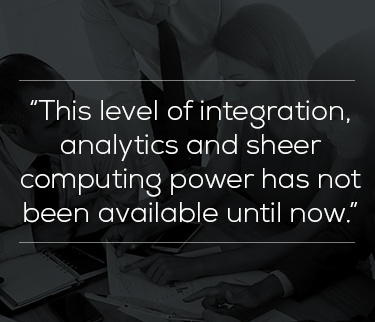 Technology is now available that makes it possible to combine multi-asset class performance and risk analytics into a single system.
Technology is now available that makes it possible to combine multi-asset class performance and risk analytics into a single system.
This has been described as a middle office Holy Grail, as successive generations of teams have struggled to reconcile the outputs from siloed legacy systems and labored to make manual workarounds in order to produce consistent reporting.
Client demand
Now, however, not only is the technology more powerful but the pressure from key stakeholders for improved analytics and reporting has reached a critical point. Regulators demand increasingly granular data and expect asset managers to use IT platforms that are robust and produce matching numbers.
Meanwhile clients expect comprehensive risk management reports and up-to-date information on absolute performance versus a benchmark. In addition, internal clients are learning that shared data has to be the 21st century way forward. Legacy systems, conflicting data and manual consolidation tasks in the reporting process are too time consuming and too costly.
“Faced with these urgent challenges, the vast majority of institutional investors are ramping up their spending on managing data.”
Source: State Street
The race for data
A report from global custodian State Street points out that asset managers “are racing to keep pace with a deluge of regulations, all of which place major demands upon their data infrastructures.” State Street says managers also need, “analytics tools that can integrate risk and performance measures across multiple asset classes.
{{cta(‘ac6116e0-3f05-4cc8-a5b6-309ed30d8fef’)}}
“Faced with these urgent challenges, the vast majority of institutional investors are ramping up their spending on managing data.”
At the same time, asset management firms that can successfully meet these challenges put themselves in contention to grow a greater share of their market. Clients and their assets are likely to gravitate towards those firms with the best, most complete analytics. Those that can’t match up to this challenge are less likely to be able to compete.
Consistency of measurement
Damian Handzy, StatPro’s Global Head of Risk underlines the importance of consistency of data across the enterprise:
“The consistency of the measurement between the risk and the performance allows you to drill in, allows you to do more and more detailed analysis and to know that your numbers are being generated self-consistently.”
He adds that once this basis is established and the data shared across the asset management business, it can be queried and interrogated in any way users decide. Stress testing different investment scenarios and the effect that they might have on the performance of an investment portfolio is just one example of how this might be useful.
Technology
So turning to the technology, it is the single data source that is the key. Hosted, not on various legacy systems around the business but remotely and securely in the cloud, it is potentially unlimited in the size, scope and complexity of the data that it can contain. It is hugely scalable and with a single data source, its consistency is never in doubt.
With all this in place, analytics can be accessed or drawn down according to appropriate permissions by whoever needs to access it within the business.
Within this context, the middle office is still the gatekeeper of the data but not its owner, any more than another department or division of a firm might be.
The further appeal is its speed of access and its lower cost. Removing the need for multiple systems for various asset classes is more economical and efficient. In addition, consolidating analytical models reduces the risk of conflicting views of the same data and because they are working from the same data, risk and performance teams will be able to work more closely together.
“2020 will see the emergence of a new breed of global managers, one that will have highly streamlined platforms…”
Source: PwC
The road ahead
This level of integration, analytics and sheer computing power has not been available until now but its arrival is perfect timing.
Research by PwC estimates that global assets under management for the asset management industry as a whole will increase to more than USD100 trillion by 2020. Their view is that the lion’s share will go to the most efficient, cost effective firms that can demonstrate the highest levels of stakeholder service. This can only be achieved with the right data, analyzed in the smartest ways and presented in the most appropriate and timely manner.
Combining risk and performance analytics has stepped out of the shadows of the middle office and is set to take center stage in the competition for business, long-term survival and profitability.
Takeaways:
- Client and regulatory demand are forcing greater discipline in data analytics.
- Computing power can now use big data to produce smart data.
- Cloud technology enables performance and risk analytics to be combined.
- An end to legacy silo systems, inconsistent data and manual interventions.
- Greater efficiency, lower cost and increased collaboration and competitiveness.
{{cta(‘bff04473-5d7d-4110-ae71-df16ed720376’)}}